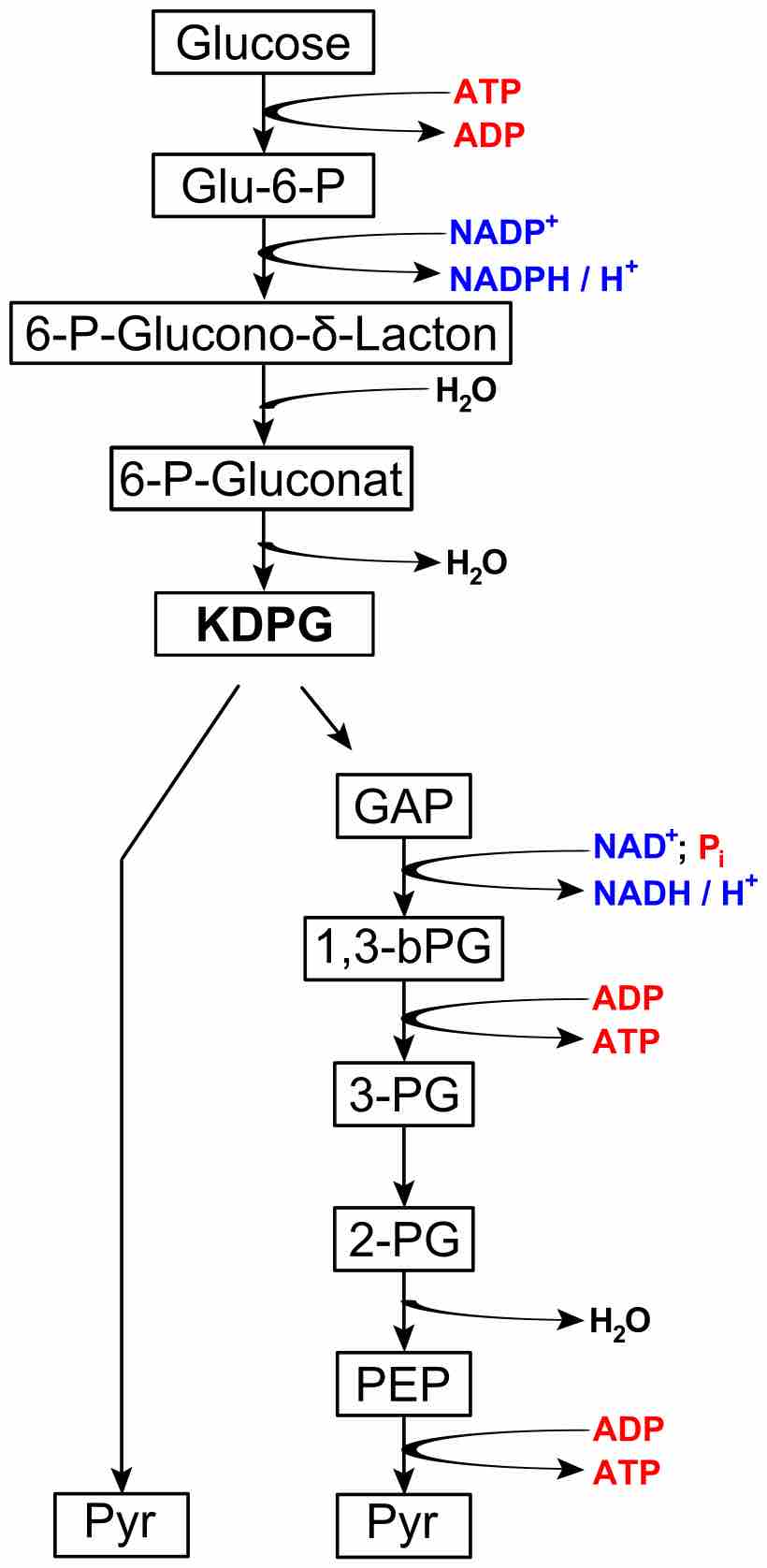The Entner–Doudoroff pathway describes an alternate series of reactions that catabolize glucose to pyruvate using a set of enzymes different from those used in either glycolysis or the pentose phosphate pathway . Glycolysis (from glycose, an older term for glucose + -lysis degradation) is the metabolic pathway that converts glucose C6H12O6, into pyruvate, CH3COCOO− + H+. The free energy released in this process is used to form the high-energy compounds ATP (adenosine triphosphate) and NADH (reduced nicotinamide adenine dinucleotide). Most bacteria use glycolysis and the pentose phosphate pathway. This pathway was first reported in 1952 by Michael Doudoroff and Nathan Entner.

The Entner–Doudoroff Pathway
This is a diagram of the Entner-Doudoroff pathway (KDPG: 2-keto-3-deoxy-6-phosphogluconate).
Distinct features of the Entner–Doudoroff pathway are that it occurs only in prokaryotes and it uses 6-phosphogluconate dehydratase and 2-keto-3-deoxyphosphogluconate aldolase to create pyruvate from glucose. The Entner–Doudoroff pathway also has a net yield of 1 ATP for every glucose molecule processed, as well as 1 NADH and 1 NADPH. By comparison, glycolysis has a net yield of 2 ATP and 2 NADH for every one glucose molecule processed.
There are a few bacteria that substitute classic glycolysis with the Entner-Doudoroff pathway. They may lack enzymes essential for glycolysis, such as phosphofructokinase-1. This pathway is generally found in Pseudomonas, Rhizobium, Azotobacter, Agrobacterium, and a few other Gram-negative genera. Very few Gram-positive bacteria have this pathway, with Enterococcus faecalis being a rare exception. Most organisms that use the pathway are aerobes due to the low ATP yield per glucose such as Pseudomonas, a genus of Gram-negative bacteria, and Azotobacter, a genus of Gram-negative bacteria.